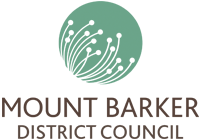Mount Barker District Council
About the profile areas
The 2023 Estimated Resident Population for the Mount Barker District Council is 42,297, with a population density of 71.13 persons per square km.
Location and boundaries
The District Council of Mount Barker area is located between 20 and 45 kilometres south-east of the Adelaide CBD. The District Council of Mount Barker area is bounded by the Adelaide Hills Council area and the Mid Murray Council area in the north, the Rural City of Murray Bridge in the east, the Alexandrina Council area in the south, and the City of Onkaparinga in the west.
Traditional Owners
The original inhabitants of the Mount Barker District Council area were the Peramangk Aboriginal people.
Name origin
The District Council of Mount Barker is named after Captain Collet Barker, who was killed by Aborigines while exploring near the mouth of the Murray River in 1831.
Important
|
Population42,297 2023 ABS ERP |
Land area594.7 square km |
Population density71.13 persons per square km |
Settlement history
European settlement dates from 1839, with land used mainly for grazing and crop farming. Growth took place in the 1850s and 1860s, spurred by gold mining. Expansion continued during the late 1800s, aided by the construction of the railway line. The most significant development occurred from the 1950s. The population of the Council area increased substantially from the early 1990s. Much of the recent growth has been in Mount Barker, Littlehampton and Nairne, due to improved access to the Adelaide CBD.
Land use
The District Council of Mount Barker area is predominantly rural, with rural-residential areas and rapidly growing urban areas. The major township is Mount Barker, with Littlehampton and Nairne in close proximity. The area is characterised by historic townships and farming areas located in the Mount Lofty Ranges. Many of the towns in the district are noted for their collection of historic buildings, most notably Hahndorf. The District Council encompasses a total land area of 595 square kilometres. Land is used largely for crop growing and general farming, with some viticulture.
Transport
The District Council of Mount Barker area is served by the South Eastern Freeway and the Princes Highway.
Major features
- Major features of the District Council of Mount Barker area include the Mount Barker Central Business District,
- The historic town of Hahndorf,
- SteamRanger Heritage Railway,
- TAFE SA (Mount Barker Campus),
- Aston Hills Golf Club,
- Laratinga Wetlands,
- Mount Barker,
- Totness Recreation Park and various wineries and vineyards.
Included areas
- The District Council of Mount Barker area includes the localities of Biggs Flat,
- Blakiston,
- Bradbury (part),
- Bridgewater (part),
- Brukunga,
- Bugle Ranges,
- Bull Creek (part),
- Callington (part),
- Chapel Hill,
- Dawesley,
- Dorset Vale (part),
- Echunga,
- Flaxley,
- Green Hills Range,
- Hahndorf (part),
- Harrogate,
- Hay Valley (part),
- Jupiter Creek,
- Kangarilla (part),
- Kanmantoo,
- Kuitpo (part),
- Littlehampton,
- Macclesfield (part),
- Meadows,
- Mount Barker,
- Mount Barker Junction,
- Mount Barker Springs,
- Mount Barker Summit,
- Mount Torrens (part),
- Mylor (part),
- Nairne,
- Oakbank (part),
- Paechtown,
- Paris Creek (part),
- Petwood,
- Prospect Hill (part),
- St Ives,
- Totness,
- Verdun (part) and Wistow.
